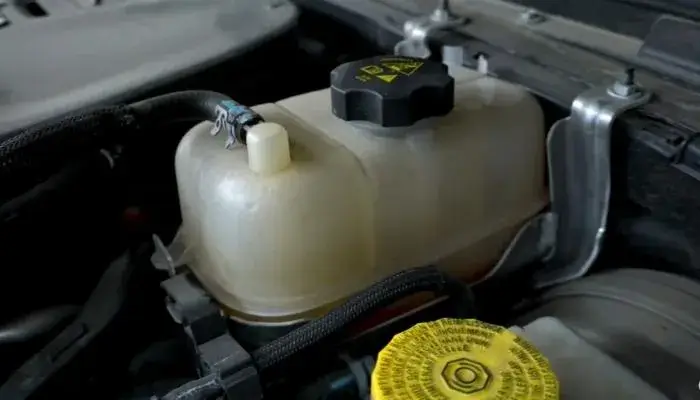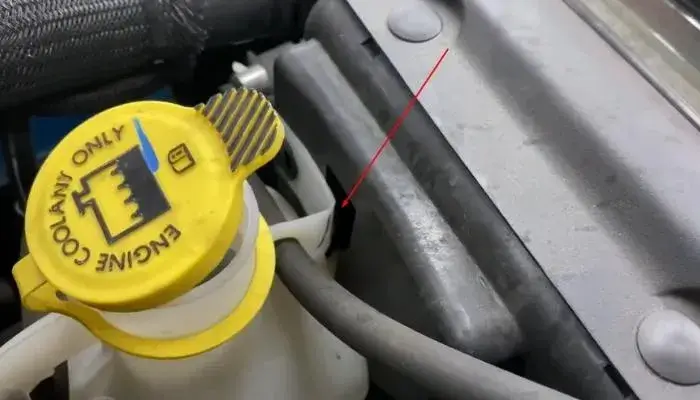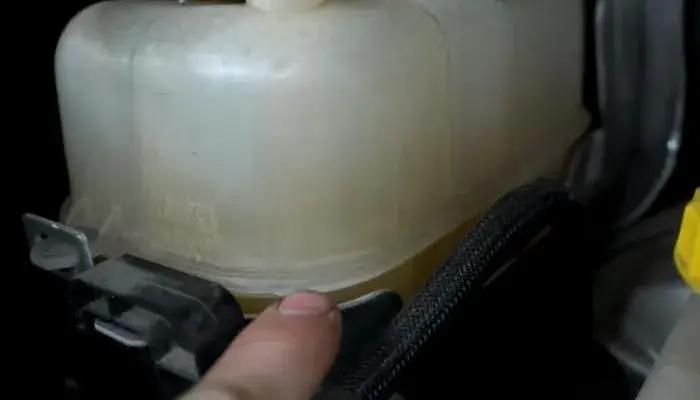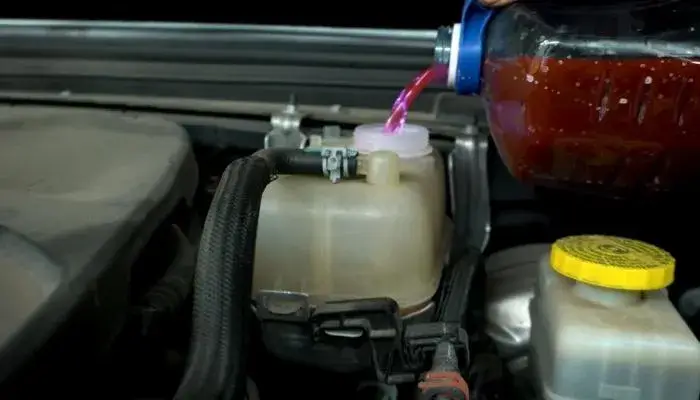“Coolant low” on a Jeep indicates that the level of coolant (antifreeze) in the cooling system is below the recommended minimum level. This can result from a leak, overheating, or evaporation. It’s essential to address this issue promptly to prevent engine overheating and potential damage.
If you own a Jeep or any other vehicle, it’s essential to understand what “coolant low” means and how it can affect your car’s performance. In this article, we’ll dive into the specifics of low coolant in a Jeep, why it’s crucial to maintain the proper coolant level, and what you can do to address this issue.

Why is Proper Coolant Level Important?
Maintaining the correct coolant level in your Jeep is critical for its overall health and performance. The engine generates a significant amount of heat, and without adequate cooling, it can overheat, leading to severe damage. Coolant, often referred to as antifreeze, plays a vital role in regulating your engine’s temperature. It prevents the engine from freezing in cold weather and overheating in hot conditions.
Signs of Low Coolant in a Jeep

- Engine Overheating: When your Jeep’s engine temperature gauge climbs into the red zone, it’s a clear sign of low coolant.
- Coolant Warning Light: Most modern Jeeps are equipped with a coolant warning light that illuminates when coolant levels are low.
- Visible Coolant Leak: If you notice a puddle of bright-colored liquid under your Jeep, it’s a sign that your coolant is leaking.
- Steam from the Engine: Low coolant can cause steam to escape from under the hood, especially after a drive.
- Reduced Heater Performance: A lack of coolant can affect your vehicle’s heating system, resulting in poor cabin heating.
Causes of Low Coolant in a Jeep
Understanding why your Jeep’s coolant level is low is essential for addressing the issue. Common causes include:
- Leakage: Coolant leaks can occur in the radiator, hoses, water pump, or even the engine itself.
- Evaporation: Over time, coolant can evaporate, reducing the overall level in the system.
- Coolant System Issues: Problems within the coolant system, such as a faulty thermostat or a malfunctioning radiator cap, can lead to coolant loss.
- External Factors: Extreme weather conditions, temperature fluctuations, and rough terrain can impact coolant levels.
How to Check Coolant Level in a Jeep

Regularly checking your Jeep’s coolant level is a simple yet effective way to prevent issues. Here’s how you can do it:
- Allow the Engine to Cool: Never open the radiator cap when the engine is hot. Wait until it cools down.
- Locate the Radiator and Expansion Tank: These are the primary components of the coolant system. The expansion tank is often transparent, allowing you to see the coolant level.
- Check the Coolant Level: Ensure the coolant level is between the minimum and maximum marks on the tank.
The Dangers of Driving with Low Coolant
Driving your Jeep with low coolant levels can have serious consequences. It can lead to:
- Engine Overheating: Overheating can cause severe engine damage and lead to costly repairs.
- Reduced Performance: A hot engine operates less efficiently, leading to reduced power and fuel economy.
- Complete Engine Failure: In extreme cases, low coolant levels can result in a complete engine failure.
Steps to Add Coolant to Your Jeep

If your Jeep’s coolant level is low, you can add more coolant to maintain the proper level. Here’s how to do it:
- Purchase the Correct Coolant: Refer to your Jeep’s owner’s manual to find the recommended type of coolant.
- Top Up the Expansion Tank: Open the cap of the expansion tank and pour in the coolant until it reaches the maximum mark.
- Start the Engine: With the cap still off, start the engine and let it run. This will help to circulate the coolant.
- Bleed Air from the System: While the engine is running, gently squeeze the upper radiator hose to release any trapped air bubbles.
- Check and Adjust: After the engine cools down, recheck the coolant level and top up if needed.
Can You Drive with Low Coolant?
It’s not advisable to drive a Jeep with low coolant, as it can lead to severe engine damage. If your vehicle’s temperature gauge indicates an overheating issue, it’s best to pull over, turn off the engine, and address the problem. Continuing to drive with low coolant can result in costly repairs and even engine failure.
Preventing Coolant Issues
To avoid low coolant issues in the first place, consider the following preventative measures:
- Regular Maintenance: Schedule routine check-ups to ensure your coolant system is in good working condition.
- Inspect for Leaks: Keep an eye out for any visible coolant leaks and address them promptly.
- Use the Right Coolant: Always use the type of coolant recommended in your Jeep’s owner’s manual.
- Monitor Coolant Levels: Check your coolant level regularly to catch any problems early.
Final Words
In conclusion, understanding what “coolant low” means on a Jeep is vital for maintaining your vehicle’s performance and longevity. Regularly checking and maintaining proper coolant levels is a straightforward but crucial aspect of vehicle ownership. By following the guidelines outlined in this article, you can keep your Jeep running smoothly and avoid costly repairs.
FAQs
Is it safe to drive with low coolant?
Driving with low coolant is not safe and can lead to engine damage. It’s best to address the issue promptly.
How often should I check my Jeep’s coolant level?
Regularly check your coolant level, especially before long trips. It’s a good practice to inspect it every few weeks.
Can I use water as a temporary coolant replacement?
In an emergency, you can use distilled water as a temporary coolant replacement, but it’s essential to replace it with the proper coolant mixture as soon as possible.
What is the ideal coolant-to-water ratio?
The ideal coolant-to-water ratio is typically 50:50. However, it’s essential to check your owner’s manual for the manufacturer’s recommendations.
How can I prevent coolant issues in the future?
Regular maintenance, including coolant checks and inspections, can help prevent coolant issues. Additionally, addressing leaks promptly is crucial.
What should I do if my Jeep continues to overheat?
If your Jeep continues to overheat even after addressing low coolant, consult a professional mechanic for a thorough inspection.
What color should my Jeep’s coolant be?
Jeep’s coolant is typically bright-colored, such as green, orange, or pink. The color may vary depending on the type of coolant used.

